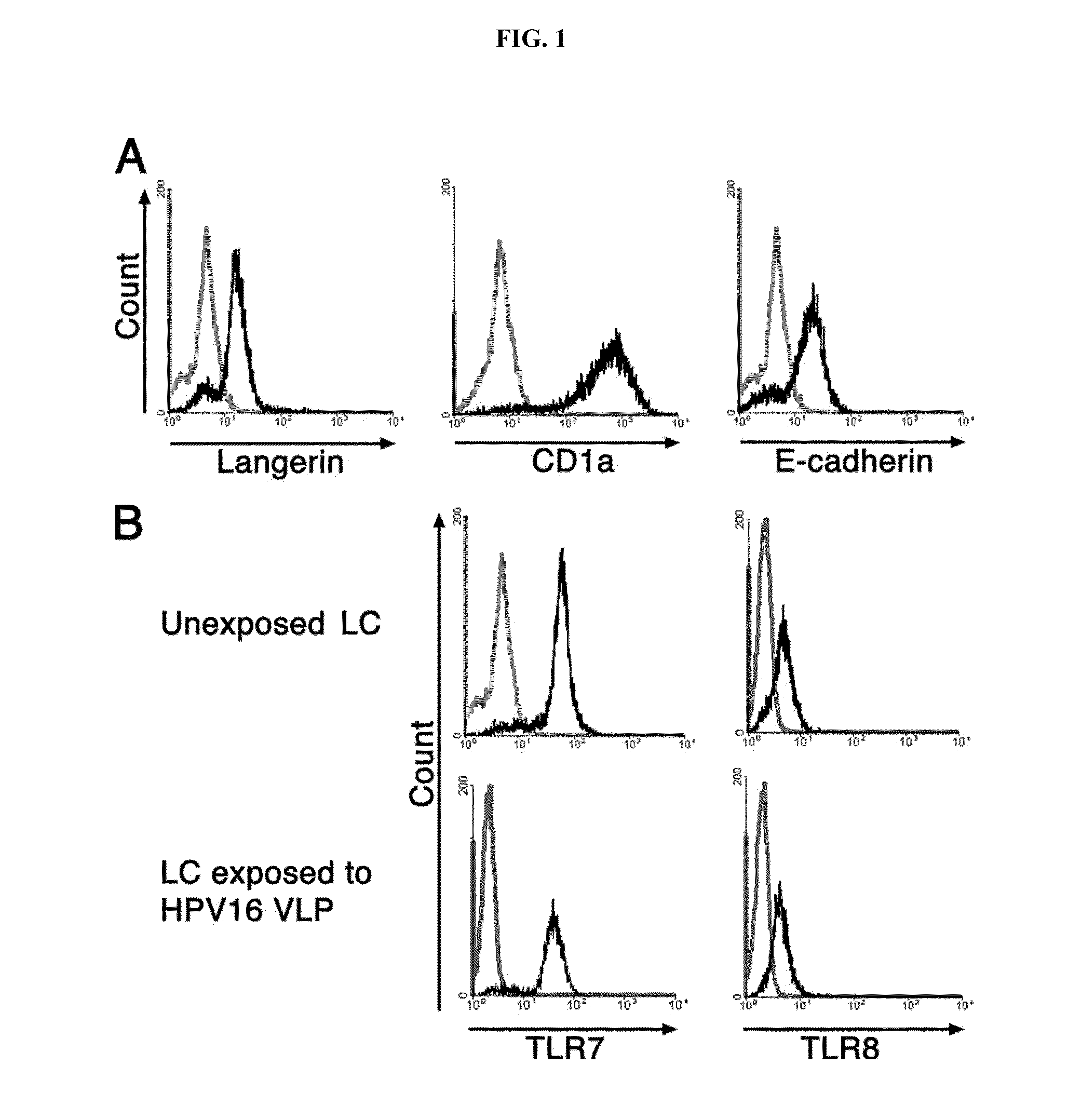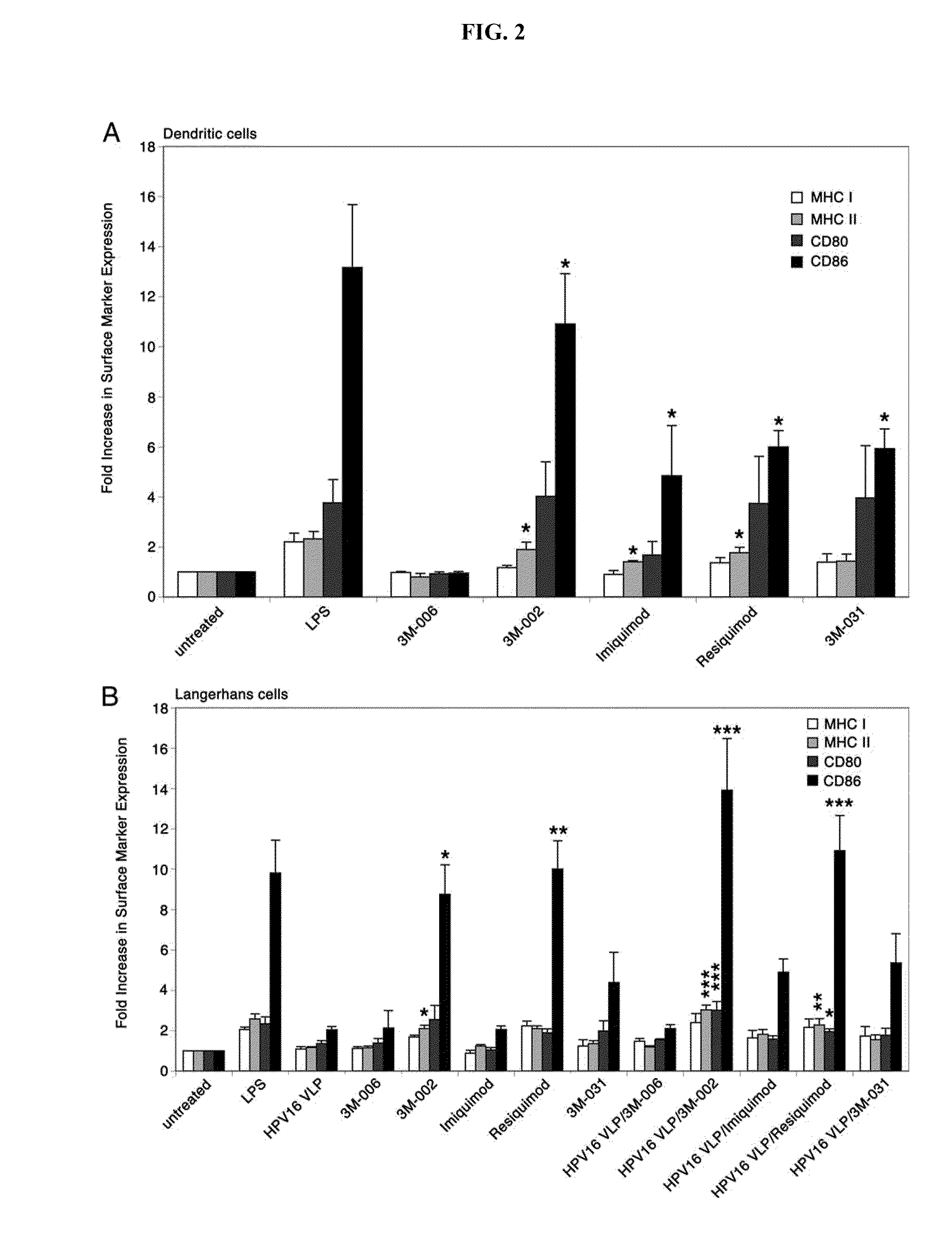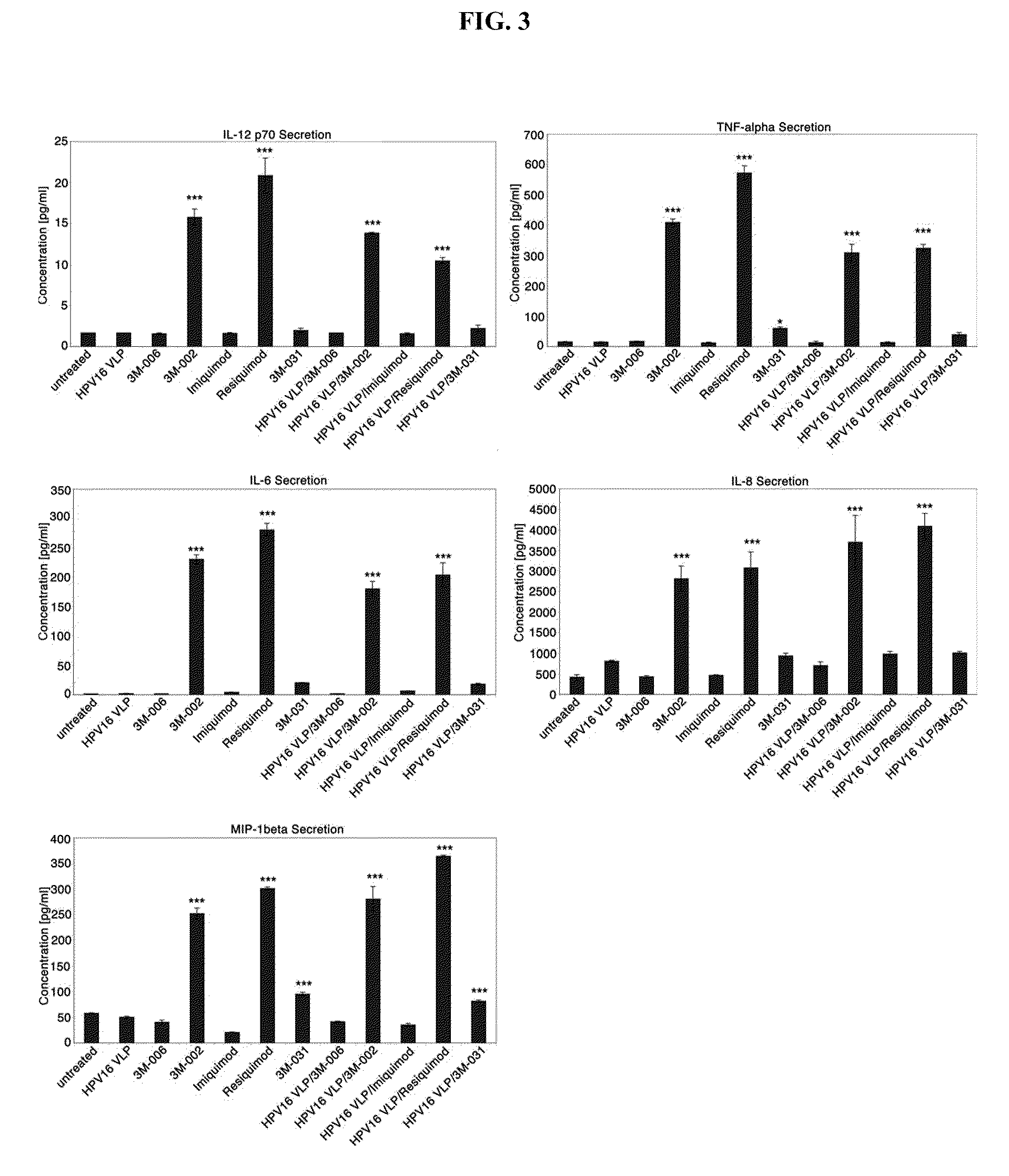Methods and Compositions of Toll-Like Receptor (TLR) Agonists
a technology of toll-like receptor and composition, which is applied in the field of methods and compositions of toll-like receptor (tlr) agonists, can solve the problems of avoiding immune detection, avoiding hpv16, and a high risk of cervical cancer, so as to prevent the induction of hpv-specific t cell responses, inhibit the maturation of the cells, and prevent the onset of cancer
- Summary
- Abstract
- Description
- Claims
- Application Information
AI Technical Summary
Benefits of technology
Problems solved by technology
Method used
Image
Examples
example 1
Materials and Methods
Antibodies (Abs) and Agonists
[0167]The Abs recognizing conformational HPV16 L1 epitopes (H16.V5, H16.E70) or linear HPV16 L1 epitopes (Camvir-1, H16.D9, H16.H5) were gifts from N. Christensen (Penn State, Hershey, Pa.), except Camvir-1, which was purchased from BD Biosciences. Polyclonal serum (DK44214) recognizing HPV16 L2 was a gift from J. Schiller (National Institutes of Health, Bethesda, Md.). The Abs to human CD 197 (CCR7)-PE, CD1a-PE, CD80-FITC, CD86-FITC, HLA-DR, DQ, DP-FITC, HLA-A, B, C-FITC, isotype controls, biotinylated anti-rabbit IgG, streptavidin-PE, and streptavidin-HRP were purchased from BD Biosciences. The Ab to human CD207 (langerin) was purchased from Immunotech and the anti-human E-cadherin Ab was purchased from Millipore. Anti-human TLR7 and antihuman TLR8-PE were purchased from Abcam. Goat anti-rabbit-HRP was purchased from BioSource International. Anti-human IFN-γ and biotinylated anti-human IFN-γ Abs were purchased from Mabtech. TLR7, 8...
example 2
TLR Agonists Up-Regulate SLPI Production by LC and Induce HPV16-Exposed LC to Activate HPV16-Specific T Cells from Patients Infected with HPV or Co-Infected with HPV / HIV
[0200]Activation of antigen-presenting cells (APC), like LC, is required for successful interaction with and activation of primary T lymphocytes. Since LC are the only APC that contact mucosal HPV in the vaginal tract and other anogenital sites, activating HPV-exposed LC may be a step necessary to initiate an adaptive immune response that can clear mucosal HPV infection. LC express a variety of TLR such as TLR 3, 7 and 8, which are known to participate in bridging antiviral innate immunity with adaptive immunity, while epithelial cells express TLR3. TLR agonists have the potential to influence the immune-stimulatory capacity of LC and epithelial cells, if applied topically to immune-suppressed HPV-infected epithelium. The TLR7 agonist, Imiquimod, is FDA-approved for genital warts and is used off-label for other skin ...
example 3
HPV16 and Other High-Risk and Low-Risk HPV also Suppress LC Maturation, and Treatment of LC with TLR Agonists Reverses the Immune Escape of Other High Risk HPV Genotypes that can Cause Cancer in HIV-Infected Individuals
[0207]The L2 protein of mucosatropic papillomaviruses is highly conserved; however it is unknown whether the immune suppressive effect of HPV L1L2 particles is conserved amongst the high-risk, low-risk, mucosal and skin-tropic viruses. Applicants contemplate to analyze genotypes from each of these papillomaviral classes to determine whether HPV effects on LC maturation and function differ depending on how likely the virus is to cause neoplastic disease. Several studies have found a broader range of HPV types in HIV-positive compared with HIV-negative women, as well as more concomitant infections frequently detected in high grade lesions (De Vuyst et al. (2008) Eur. J. Cancer Prey. 17:545-554).
[0208]With HPV16 accounting for a smaller proportion of HPV infections in HI...
PUM
| Property | Measurement | Unit |
|---|---|---|
| Immunogenicity | aaaaa | aaaaa |
Abstract
Description
Claims
Application Information
 Login to View More
Login to View More - R&D
- Intellectual Property
- Life Sciences
- Materials
- Tech Scout
- Unparalleled Data Quality
- Higher Quality Content
- 60% Fewer Hallucinations
Browse by: Latest US Patents, China's latest patents, Technical Efficacy Thesaurus, Application Domain, Technology Topic, Popular Technical Reports.
© 2025 PatSnap. All rights reserved.Legal|Privacy policy|Modern Slavery Act Transparency Statement|Sitemap|About US| Contact US: help@patsnap.com



